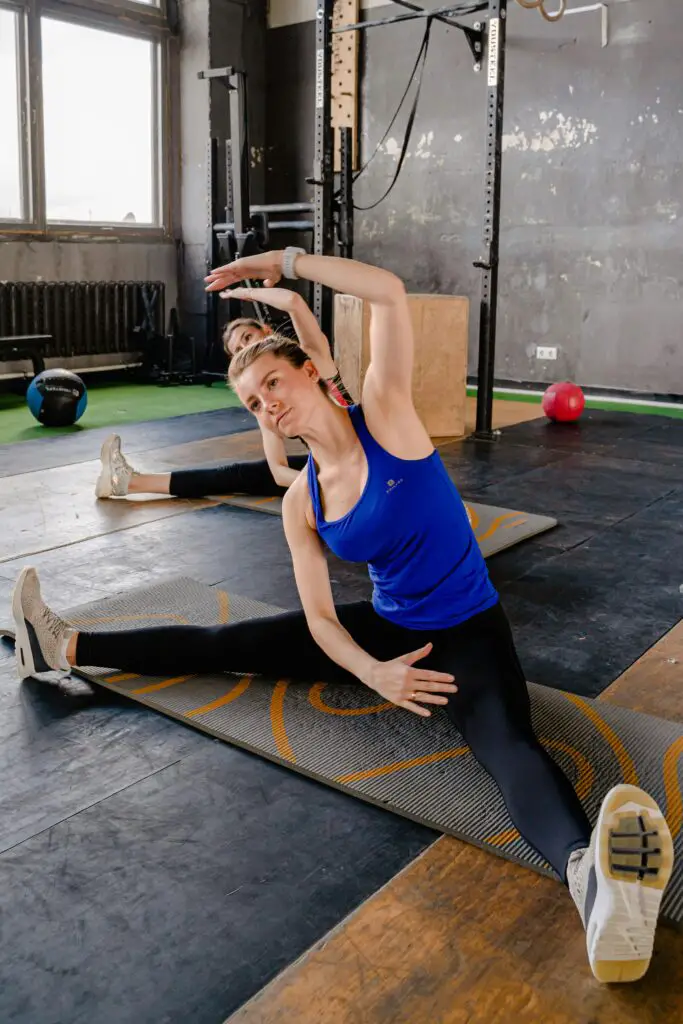Shoulder impingement is the medical term for the situation where the rotator cuff muscles’ tendons become compressed between the shoulder bones. Pain, swelling, and limited mobility may follow from this. Abuse, bad posture, imbalanced muscles, and injuries are common reasons.

Precautions Before Starting Exercises
Speaking with a healthcare provider before starting any workout program for shoulder impingement is crucial. Based on your particular situation and limits, they can provide particular guidance. Furthermore, it’s essential to recognize your body’s limitations and abstain from activities that worsen pain.
Types of Shoulder Impingement Exercises
Range of Motion Exercises
Exercises that increase the range of motion help lower the risk of impingement by increasing the shoulder joint’s flexibility and mobility.
Shoulder Circles: Start by taking a comfortable seat or standing. Turn your shoulders slowly in two directions: clockwise and anticlockwise. Repeat ten times in each direction.
Pendulum Exercise: Lean forward at the waist and use a table or chair to support your weight with your unaffected arm. Give your injured arm a free hang. To increase the range of motion, gently swing your arm in a circular manner and back and forth.
Stretching Exercises
Exercises that stretch the muscles around the shoulder joint help reduce discomfort and strain by releasing tension in those muscles.

Shoulder Stretch: Place your hands behind your back and stand up. Raise your arms slowly while maintaining a straight posture until you feel a strain on your shoulders. Hold for 15 to 30 seconds, then do so three times.
Cross-Body Shoulder Stretch: With your unaffected arm, gently draw your affected arm towards your chest as you bring it across your upper body. Switch to the opposite side after 15 to 30 seconds of holding.
Strengthening Exercises
Shoulder muscle strengthening exercises improve stability and reduce the risk of impingement.
External Rotation with Resistance Band: At waist height, fasten a resistance band to a stationary object. Maintaining a 90-degree bent elbow, grasp the other end with your affected arm. With your arm rotated slowly outward against the band’s resistance. Do ten repetitions in three sets.
Scapular Squeezes: With your arms by your sides, take a seat or stand. Try pinching your shoulder blades together to hold a pencil between them. Release after 5–10 seconds of holding. Ten times, repeat.
Postural Exercises
Postural exercises lessen the load on the tendons and muscles by correcting improper shoulder alignment.
Wall Angels: Place your arms by your sides and lean against a wall. Raise your arms slowly upward while maintaining touch with the wall. Reposition them to the starting position. Ten times over, repeat.
Shoulder Blade Squeeze: Keep your arms at your sides, whether sitting or standing. Squeeze them together like you were trying to grip a pencil between your shoulder blades. Release after five to ten seconds of holding. Repeat ten times.
Neuromuscular Control Exercises
Exercises for neuromuscular control increase the shoulder joint’s stability and coordination, which lowers the possibility of impingement.
Wall Push-Ups: Place your arms out in front of you, palms level with the wall at shoulder height, as you face the wall. As you gradually lower your body toward the wall, bend your elbows and push yourself back to the starting position. Complete three sets of ten rounds.

Shoulder Blade Retraction: With your arms by your sides, take a seat or stand. Pull your shoulder blades back and down as though attempting to tuck them into your back pockets. Release after 5–10 seconds of holding. Ten times, repeat.
Core Strengthening Exercises
Exercises that strengthen the core assist with posture and general s ability, lessening shoulder joint stress.
Plank Variations: With your body in a straight line from your head to your heels, begin in the plank position, either on your hands or your forearms. After 30 to 60 seconds of holding, take a break and repeat three times.
Side Plank: Stretch your legs wide apart and stack them on top of one another while lying on your side. Maintain your elbow exactly beneath your shoulder as you raise yourself on your forearm. Raise your hips off the floor so that your head and heels are in a straight line. After 30 to 60 seconds of holding, switch sides.
Benefits of Shoulder Impingement Exercises
Pain Reduction: Exercising for shoulder impingement helps reduce pain and discomfort by focusing on the muscles surrounding the shoulder joint. Exercise can lessen discomfort by strengthening these muscles and enhancing joint stability, which in turn helps lessen pressure on the tendons.
Improved Range of Motion: Because the shoulder muscles are inflamed and tense, people with shoulder impingement frequently have a restricted range of motion. Exercises targeting improving mobility and flexibility can help restore a greater range of motion, making it simpler to move the shoulder joint.
Non-Invasive Treatment Option: For those looking for a non-invasive and affordable therapy option for shoulder impingement, exercise-based therapies provide symptom relief. Exercises offer a natural and comprehensive method of treating impingement-related problems in contrast to invasive procedures or long-term drug use.
Improved Posture: Many people with shoulder impingement also have bad posture, which can worsen their symptoms and lead to muscle imbalances. Impingement workout routines incorporating postural exercises can help address alignment problems, improve posture, and lessen stress on the shoulder joint.
Lifestyle Modifications
Exercises are not the only things that can help prevent and relieve shoulder impingement. Some lifestyle changes can help as well.

Ergonomic Adjustments
Make sure the ergonomics of your workspace encourage good posture and reduce shoulder strain. Make use of ergonomic chairs, change the height of your desk and monitor, and take regular pauses to stretch and recharge.
Rest and Recovery
In between workouts, give your shoulder enough time to rest and heal. To avoid aggravating symptoms, refrain from overdoing it and pay attention to your body’s signals.
Conclusion
Although shoulder impingement can be a crippling ailment, you can effectively control symptoms and enhance your shoulder function with the appropriate workouts and lifestyle changes. You can reduce discomfort, regain mobility, and avoid further injury by including a range of motion exercises, stretching, strengthening, posture correction, neuromuscular control exercises, and core strengthening in your workout routine.
